Why Turkey is the best Travel Spot in 2024!
In 2024, if you wanna explore rich cultural history and crossroad of civilization cultivated with blending influences of Greeks, Romans, Byzantines & Ottomans. Cities like Istanbul are steeped in history with landmarks like the Hagia Sophia, Topkapi Palace, and the Grand Bazaar.
One of the best-preserved ancient cities, Ephesus showcasing Roman architecture and history is must to be explored in 2024. Cities like Cappadocia Known for its unique rock formations and historical sites, including ancient cave churches and underground cities must be in your bucket List.
Weather you are interested in history, culture, nature or food Turkey promises enriching and unforgettable experience in 2024.
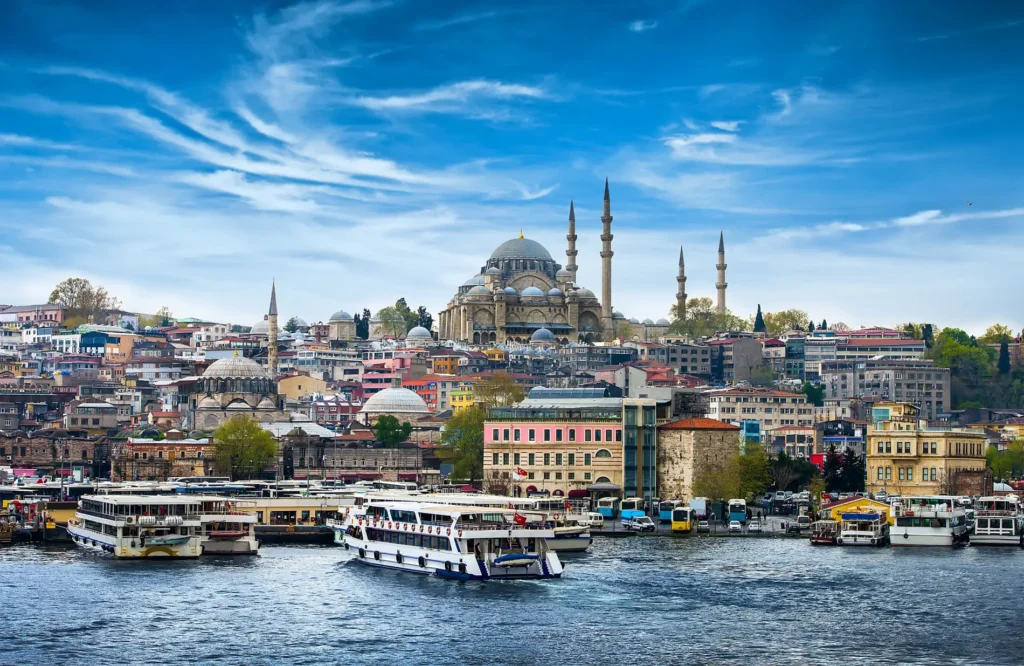
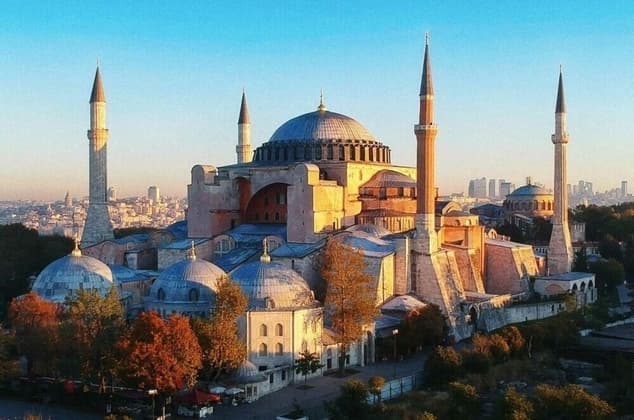
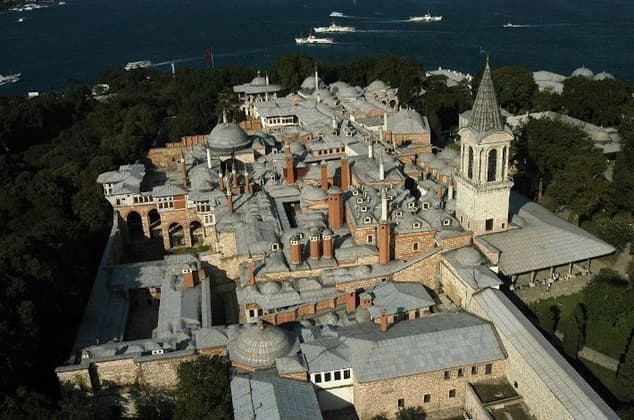
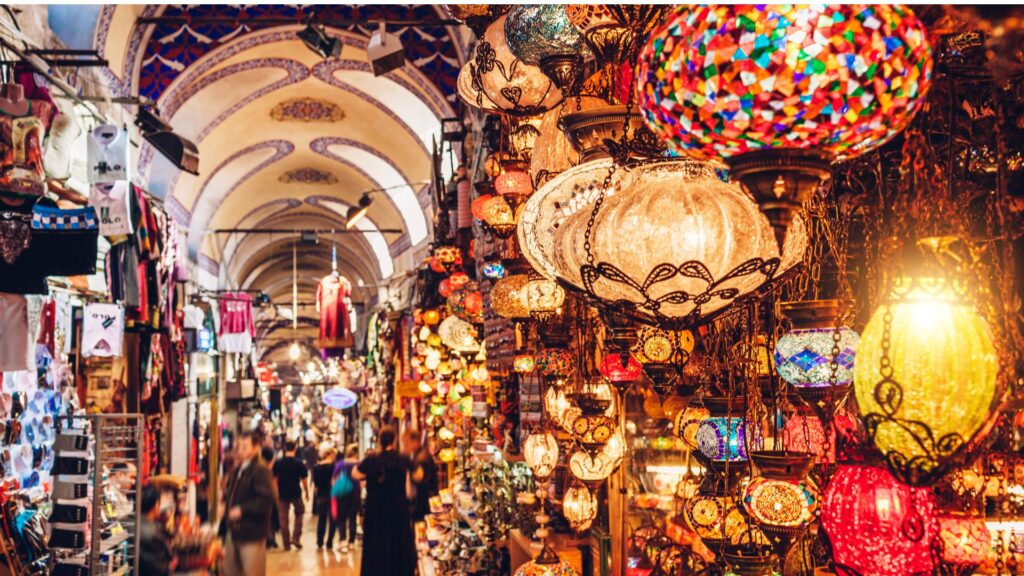
Key Attractions of Istanbul in 2024
*Hagia Sophia, located in Istanbul, Turkey, is a historic architectural marvel with a rich and varied history. Here is a brief overview:
Historical Significance
- Construction: Originally built as a cathedral by the Byzantine Emperor Justinian I in 537 AD.
2.Church to Mosque: Converted into a mosque in 1453 after the Ottoman conquest of Constantinople.
3.Museum and Beyond: Became a museum in 1935 under the secular Turkish Republic, and was reconverted into a mosque in 2020.
Architectural Highlights
- Design: Famous for its massive dome, considered an engineering marvel of its time.
- Interior: Lavishly decorated with mosaics, marble pillars, and Islamic calligraphy.
- Innovation: Its innovative design influenced the architecture of many subsequent Ottoman mosques.
Cultural and Religious Importance
- Christian Era: Served as the center of Orthodox Christianity for nearly 1,000 years.
- Islamic Era: A significant mosque for almost 500 years, reflecting the Ottoman Empire’s architectural style and religious practices.
- Modern Symbol: Continues to be a symbol of the rich cultural and religious history of Turkey.
Visitor Experience
- Tourist Attraction: Attracts millions of visitors annually, who come to admire its historical and architectural significance.
- Iconic Landmark: Recognized as a UNESCO World Heritage site, it stands as a testament to the diverse history of Istanbul.
Hagia Sophia’s unique blend of Byzantine and Ottoman influences makes it a must-visit landmark in 2024
*Topkapi Palace, located in Istanbul, Turkey, is a historic and opulent complex that served as the primary residence of the Ottoman sultans for nearly 400 years. Here is a brief overview:
Historical Significance
- Construction: Commissioned by Sultan Mehmed II in 1459, shortly after the Ottoman conquest of Constantinople.
- Residence and Administration: Served as the administrative, educational, and cultural center of the Ottoman Empire from the 15th to the 19th century.
- Transformation: Converted into a museum in 1924 by Mustafa Kemal Atatürk, the founder of the Turkish Republic.
Architectural Highlights
- Layout: A sprawling complex consisting of four main courtyards and numerous smaller buildings.
- Gates and Entrances: The Imperial Gate, Gate of Salutation, and Gate of Felicity are notable entrances, each leading to different sections of the palace.
- Pavilions and Halls: Includes the Audience Hall, Imperial Treasury, and the Harem, each richly decorated with intricate tiles, mosaics, and calligraphy.
Cultural and Historical Treasures
- Imperial Treasury: Houses an extensive collection of jewels, including the famous Topkapi Dagger and the Spoonmaker’s Diamond.
- Sacred Relics: Contains religious artifacts, such as the Prophet Muhammad’s cloak and sword.
- Harem: A secluded part of the palace where the sultan’s family lived, showcasing lavish quarters and beautiful decorations.
Visitor Experience
- Museum Exhibits: Displays a vast array of artifacts from the Ottoman era, including weapons, clothing, manuscripts, and ceramics.
- Gardens and Courtyards: Visitors can stroll through beautifully landscaped gardens and courtyards, offering scenic views of the Bosphorus.
- Guided Tours: Available to provide deeper insights into the palace’s history and significance.
Cultural Importance
- Ottoman Legacy: Topkapi Palace is a symbol of the grandeur and power of the Ottoman Empire.
- UNESCO World Heritage Site: Recognized for its historical and architectural value, contributing to Istanbul’s rich cultural heritage.
Topkapi Palace remains one of Istanbul’s most significant historical sites, attracting visitors from around the world to explore its luxurious architecture, rich history, and cultural treasures.
*The Grand Bazaar (Kapalıçarşı) in Istanbul, Turkey, is one of the largest and oldest covered markets in the world. Here is a brief overview:
Historical Significance
- Establishment: Founded in 1461 by Sultan Mehmed II after the Ottoman conquest of Constantinople.
- Economic Hub: Served as a major center for trade and commerce during the Ottoman Empire, linking Europe and Asia.
Architectural Highlights
- Structure: Spanning over 30,000 square meters, the bazaar consists of more than 60 streets and alleys.
- Shops and Stalls: Houses approximately 4,000 shops, offering a wide variety of goods.
- Design: Features a series of domed and vaulted roofs, with richly decorated interiors and mosaic-tiled pathways.
Shopping Experience
- Variety of Goods: Offers an extensive range of products, including jewelry, ceramics, carpets, textiles, spices, and antiques.
- Artisanal Crafts: Known for its high-quality, handmade goods, reflecting traditional Turkish craftsmanship.
- Bargaining: Haggling is a common practice, allowing visitors to negotiate prices with shopkeepers.
Cultural and Social Atmosphere
- Vibrant Environment: Bustling with activity, the bazaar is a lively and colorful place where locals and tourists mingle.
- Cafes and Eateries: Numerous small cafes and eateries offer traditional Turkish tea, coffee, and snacks, providing a break from shopping.
Visitor Experience
- Historical Tours: Guided tours are available to explore the bazaar’s history, architecture, and notable landmarks.
- Cultural Immersion: Provides a unique opportunity to experience the daily life and traditions of Istanbul.
- Accessibility: Easily accessible from many parts of the city, located in the heart of Istanbul’s historic district.
Cultural Importance
- Symbol of Istanbul: Represents the city’s rich trading history and cultural diversity.
- Tourist Attraction: Attracts millions of visitors annually, making it one of Istanbul’s top tourist destinations.
The Grand Bazaar offers a unique blend of history, culture, and commerce, making it a must-visit destination for anyone traveling to Istanbul in 2024.

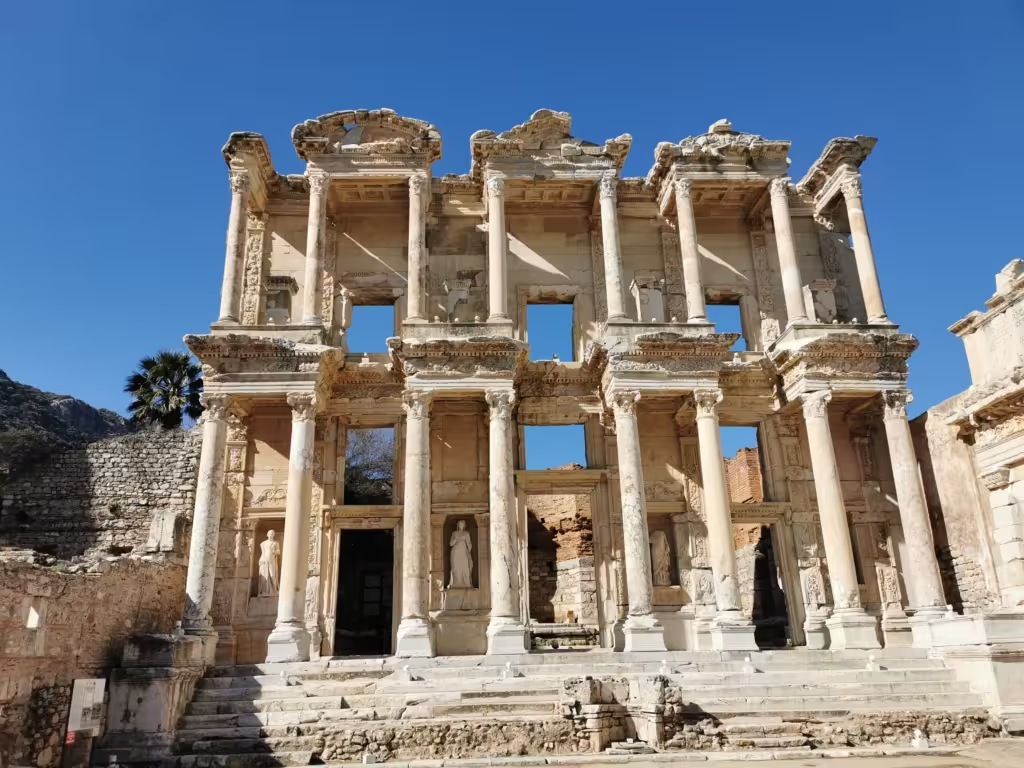

Ephesus, located near the modern town of Selçuk in Turkey, is one of the best-preserved ancient cities and a major tourist attraction. Here is a brief overview:
Historical Significance
- Ancient Origins: Founded in the 10th century BC by Greek colonists, later becoming a major city of the Roman Empire.
- Roman Era: Ephesus was an important cultural, economic, and religious center, known for its grand architecture and as a hub of early Christianity.
- Decline: The city declined due to a combination of siltation of its harbor, earthquakes, and changing trade routes.
Architectural Highlights
- Library of Celsus: One of the most iconic structures, originally built to store 12,000 scrolls and to serve as a monumental tomb for Celsus.
- The Great Theatre: A massive theater that could hold up to 25,000 spectators, used for drama performances and gladiatorial contests.
- Temple of Artemis: One of the Seven Wonders of the Ancient World, although only a few remnants remain today.
- Terrace Houses: Luxurious residences of the wealthy, showcasing intricate mosaics and frescoes.
Cultural and Religious Importance
- Christian Heritage: Ephesus is significant in early Christian history, mentioned in the New Testament, and traditionally believed to be the site where the Apostle John wrote his Gospel.
- The Virgin Mary’s House: Located nearby, believed by some to be the last residence of the Virgin Mary.
- Temple of Hadrian: A well-preserved temple dedicated to Emperor Hadrian, featuring elaborate sculptures and carvings.
Visitor Experience
- Archaeological Site: Visitors can explore extensive ruins, including streets lined with marble columns, ancient baths, and public latrines.
- Ephesus Museum: Located in Selçuk, it houses many artifacts uncovered from the site, providing deeper insights into the city’s history and culture.
- Guided Tours: Available to enhance the experience with historical context and detailed explanations of the ruins.
Cultural Importance
- UNESCO World Heritage Site: Recognized for its outstanding universal value and historical significance.
- Educational Value: Offers a glimpse into ancient urban life and the grandeur of Roman architecture and engineering.
Ephesus stands as a testament to the grandeur of ancient civilizations and remains a captivating destination for history enthusiasts and tourists alike.


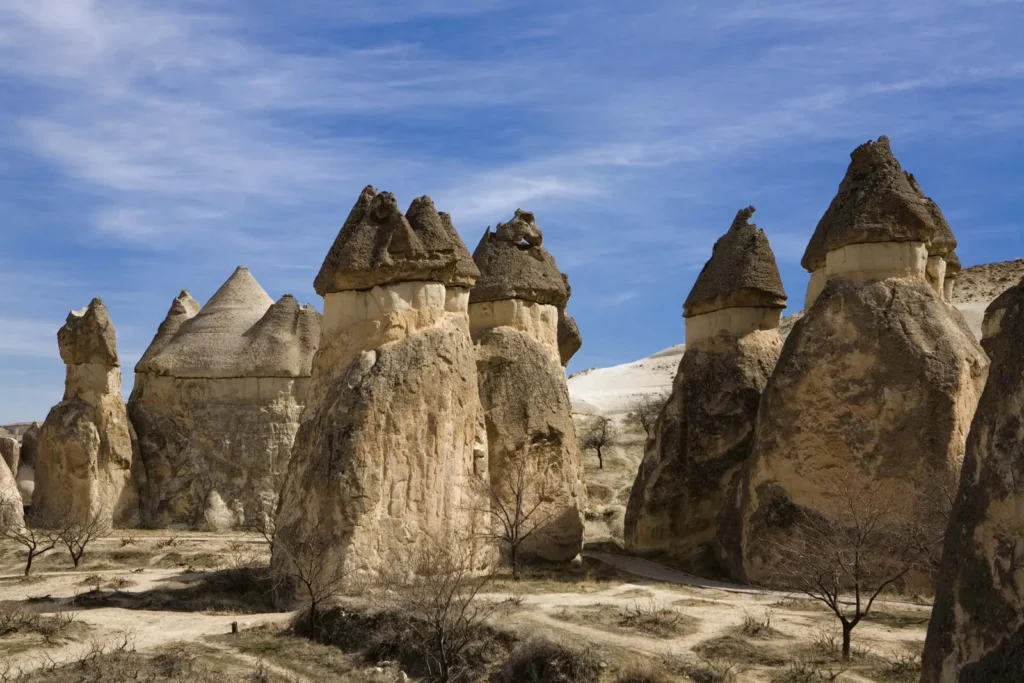

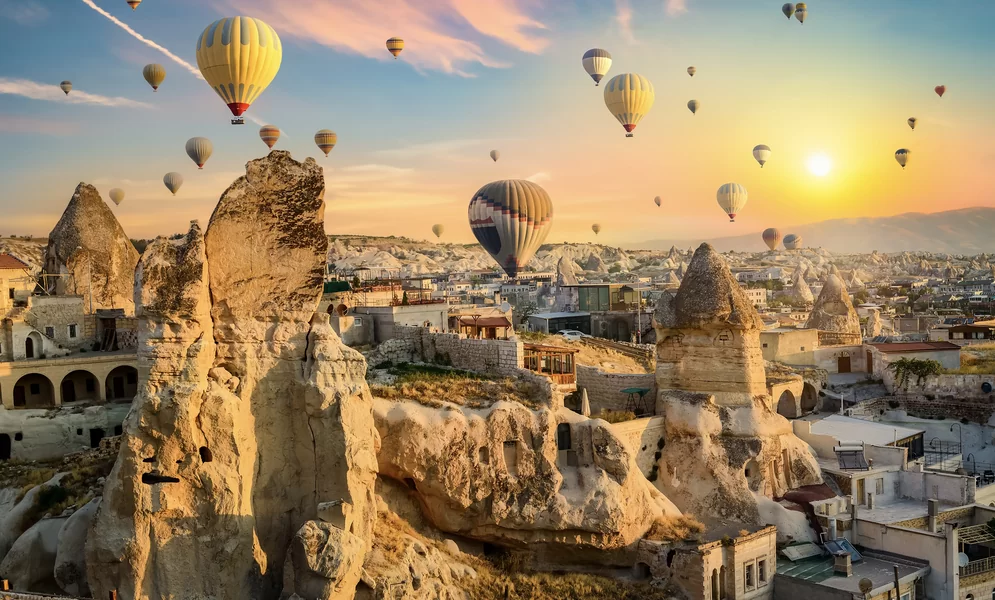

Cappadocia, located in central Turkey, is renowned for its unique geological features, rich history, and cultural significance. Here is a brief overview:
Geographical and Geological Features
- Fairy Chimneys: Distinctive rock formations created by volcanic activity and erosion over thousands of years.
- Valleys and Caves: The landscape is dotted with valleys, rock formations, and extensive cave systems.
- Underground Cities: Complex networks of subterranean cities, such as Derinkuyu and Kaymakli, used historically for refuge and habitation.
Historical Significance
- Ancient Inhabitants: Inhabited since the Hittite era, later becoming a significant region for early Christians who built cave churches and monasteries.
- Byzantine Era: Flourished during the Byzantine period, with numerous rock-cut churches adorned with frescoes.
Architectural Highlights
- Goreme Open-Air Museum: A UNESCO World Heritage site featuring rock-cut churches with well-preserved frescoes.
- Uchisar Castle: A natural rock fortress offering panoramic views of the region.
- Cave Dwellings: Traditional homes carved into the soft volcanic rock, many of which are still in use today or converted into boutique hotels.
Cultural and Religious Importance
- Early Christian Heritage: A refuge for early Christians, who established monasteries and left behind richly decorated churches.
- Iconography and Art: The region’s churches are renowned for their unique frescoes depicting biblical scenes and saints.
Visitor Experience
- Hot Air Balloon Rides: Cappadocia is famous for its hot air ballooning, offering breathtaking views of the surreal landscape at sunrise.
- Hiking and Trekking: Numerous trails through valleys like Rose Valley, Pigeon Valley, and Love Valley provide opportunities for exploration and adventure.
- Cultural Tours: Visitors can explore the historical and cultural sites, including local crafts and pottery workshops.
Cultural Importance
- Tourist Attraction: One of Turkey’s most popular tourist destinations, known for its natural beauty and historical sites.
- Cultural Festivals: Hosts various cultural events and festivals, celebrating local traditions, arts, and crafts.
Modern Amenities
- Accommodations: Unique cave hotels offer a blend of traditional and modern comforts.
- Cuisine: Local cuisine featuring traditional Turkish dishes and regional specialties.
Cappadocia’s enchanting landscape, historical depth, and vibrant culture make it a unique and unforgettable destination for travelers in 2024.
